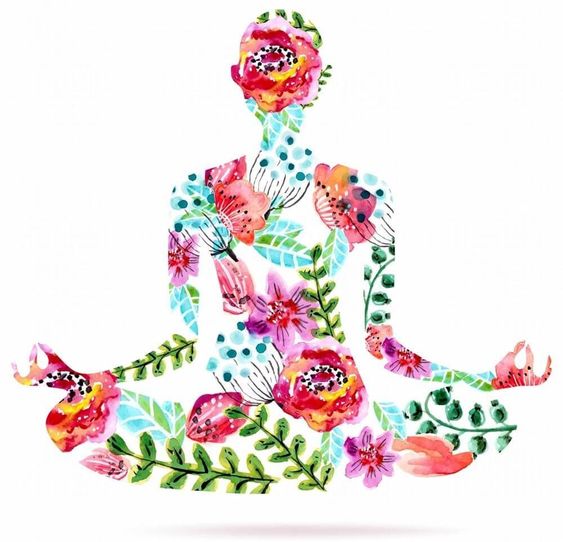No products in the cart.
Advice, Uncategorized
MEDITATION
WHAT IS MEDITATION?
Meditation is a technique used to calm your mind and free it from thoughts and outside influences. It brings us into a space where we can perceive ourselves and our ego from a distance.
HOW TO MEDITATE?
There are many ways and techniques to meditate, with most of them originating in Buddhism. The easiest one is fully focusing on your breathing. You can meditate by repeating a certain sentence (a prayer or mantra), or by visualizing certain images. You can meditate by yourself in silence or with the instructions and guidance of the person leading the meditation.
TYPES OF MEDITATION
- Loving-kindness Meditation or Metta meditation. Its goal is to cultivate an attitude of love and kindness toward everything: themselves, the people around them and even a person’s enemies and sources of stress. While breathing deeply, practitioners open their minds kindness. They then send messages of loving kindness to the world, to specific people, or to their loved ones. In most forms of this meditation, the key is to repeat the message many times, until the practitioner feels an attitude of loving kindness. It can help those affected by: anger, frustration, resentment or conflicts with other people. It is known to reduce depression, anxiety and PTSD.
Body Scan or Progressive Meditation is meditation that encourages people to scan their bodies for areas of tension. The goal is to notice tension and to allow it to release. During a progressive relaxation session, practitioners start at one end of their body, usually their feet, and work through the whole. Some forms of progressive relaxation require people to tense and then relax muscles. Others encourage a person to visualize a wave, drifting over their body to release tension. Progressive relaxation can help to promote generalized feelings of calmness and relaxation. It may also help with chronic pain. Because it slowly and steadily relaxes the body, some people use this form of meditation to help them sleep.
Mindfulness Meditation is a form of meditation that urges practitioners to stay in the moment. Rather than dwelling on the past or dreading the future, mindfulness encourages awareness of a person’s existing surroundings. Crucial to this is a lack of judgment. So, rather than reflecting on the annoyance of a long wait, a practitioner will simply note the wait without judgment. Mindfulness meditation is something people can do almost anywhere. While waiting in line at the grocery store, for example, a person might calmly notice their surroundings, including the sights, sounds, and smells they experience. A form of mindfulness is involved in most kinds of meditation. Breath awareness encourages practitioners to be aware of their breathing, while progressive relaxation draws attention to areas of tension in the body. Because mindfulness is a theme common to many forms of meditation, it has been extensively studied. Research has proved that mindfulness can: reduce fixation on negative emotions, improve focus, improve memory, lessen impulsive reactions and improve relationship satisfaction.
Breath awareness meditation is a type of mindful meditation that encourages mindful breathing. Practitioners breathe slowly and deeply, counting their breaths or otherwise focusing on their breaths. The goal is to focus purely on breathing and to ignore other thoughts that enter the mind. As a form of mindfulness meditation, breath awareness offers many of the same benefits as mindfulness. Those include reduced anxiety, improved concentration, and greater emotional flexibility.
Kundalini yoga is a physically active form of meditation that blends movements with deep breathing and mantras. People usually learn from a teacher or do a class. However, you can learn the poses and mantras at home. Kundalini can improve physical strength and reduce pain. It may also improve mental health by reducing anxiety and depression.
Zen Meditation or Zazen is a form of meditation that is prominent in Buddhism. Many Zen practitioners study with a teacher because this kind of meditation involves specific steps and positions. The goal is to find a comfortable position, focus on breathing, and mindfully observe one’s thoughts without judgment. Again, this form of meditation is similar to mindfulness meditation but requires more discipline and practice. People may prefer it if they are seeking both relaxation and a new spiritual path.
Transcendental Meditation is a spiritual form of meditation where practitioners remain seated and breathe slowly. The goal is to transcend or rise above the person’s current state of being. During a meditation session, practitioners focus on a mantra or a repeated word or series of words. A teacher chooses the mantra based on a complex set of factors, sometimes including the year the practitioner was born, and the year the teacher was trained. An alternative allows people to choose their mantra. This more contemporary version is not technically Transcendental Meditation, though it may look substantially similar. A practitioner might decide to repeat “I am not afraid of public speaking” while meditating. People who practice Transcendental Meditation report both spiritual experiences and heightened mindfulness.
BENEFITS OF MEDITATIONAll of the techniques above have their specific benefits which you can view above. Some benefits that they all have in common are: reducing stress, getting rid of chronic pain, improvement of concentration and memory, getting rid of insomnia, getting rid of negative thoughts and accepting ourselves the way we are and improving our confidence.
TIPS FOR BETTER MEDITATION
Meditation is a skill that requires a certain time to master, that’s why you need to do it often and not give up, if you want to see results. Make yourself a meditation corner with a pillow, a candle. Put a picture on the wall that reminds you of peace and calm. And meditate once a day.


 Srpski
Srpski